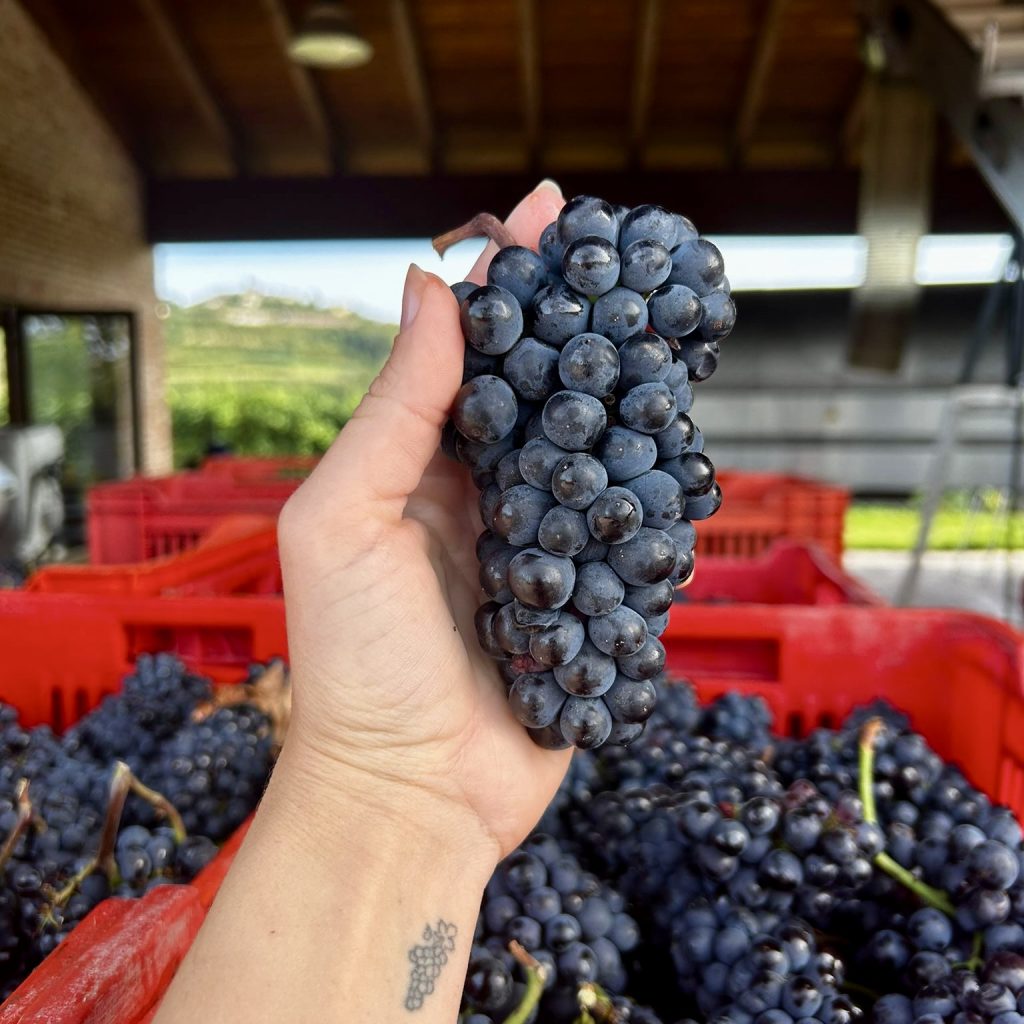
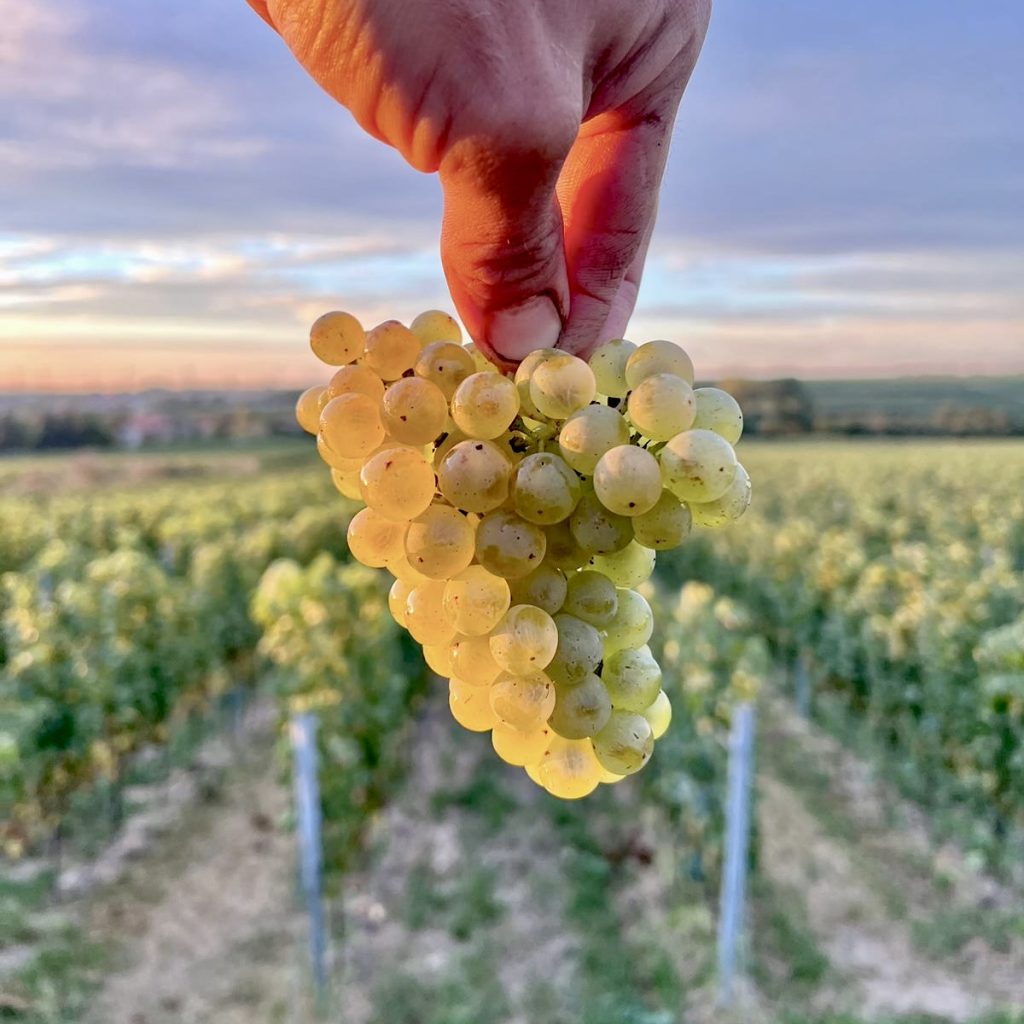
Left: Giovanna Bagnasco holding Pinot Noir harvested from Brandini’s Alta Langa vineyard grown at over 600m
Right: Wechsler Scheurebe in the hands of Manuel, Katharina’s new husband!
Europe is in full harvest and vinification mode, and 2023 will go down as a challenging one for many regions. Of course, the usual culprits chipped away at the morale of the growers from the start of the season with the arrival of frost, torrential floods, relentless mildew pressure, soul-crushing hailstorms late in the season, and untimely rain on nearly ripe grapes. Few regions were spared but there is still great hope for quality. As usual, we’ll know when we know. In the meantime, there are a lot of superb wines making their way to our shores from the 2018-2022 vintages.
In anticipation of a strong second half of the year, we have a massive dose of wines arriving. No one saw the breadth of the industry-wide entertainment strike coming until it was here, and it’s yet another one of our industry’s major speed bumps that began with the tariffs in 2018 and got worse shortly thereafter and hasn’t quite rebounded in full yet. We’re in this one with you again, and after having been through so much together already, we know we’ll make it to the other side of this situation, too. And with the writers now returning to work, we’re at least part of the way there.

Another installment of the Rare & Allocated Flight Tastings trade event is on the schedule. Seats are limited so check with your salesperson to grab a spot. The lineup includes all organic wines and a broad snapshot of our European imports.
Our Champagne flights include a new organic and biodynamic micro-producer from the Pinot Noir focused appellation of Les Riceys, Eric Collinet, as well as wines from one of Champagne’s biodynamic gurus, Vincent Charlot, and the bubbles from Pascal Mazet’s vintage wines blended with about 40% of their solera foudre that’s been topped with wine since 1981.
Then we dig into some white wines with Tegernseerhof’s top 2021 Smaragd Grüner Veltliners and Rieslings. Katharina Wechsler’s highly anticipated 2021 dry Riesling crus, Benn, Kirchspiel, and Morstein are arriving. A new batch of Montlouis from the sulfite-free Domaine Vallée Moray, and then Augalevada’s flor yeast wines.
On the red sets, we focus on Italy with Burgundy-trained Giacomo Baraldo’s Sangiovese crus, Dave Fletcher’s three Barbaresco crus and finally a series of new Barolo from Brandini, possibly with its winemaker, Giovanna Bagnasco, in attendance.
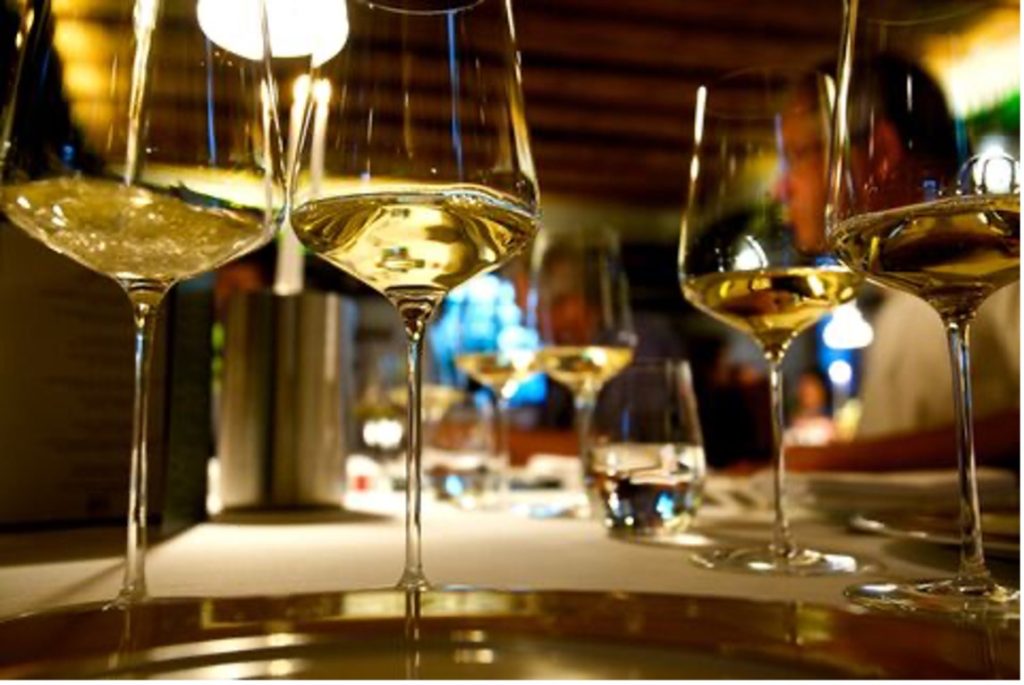
Many of these wines (particularly Augalevada, Vallée Moray and possibly Fletcher) will be shown only at these events, so please try to secure your spot ASAP. We will have four one-hour seatings starting at 11 a.m., with the last at 2 p.m.

Los Angeles – Wednesday, October 25th at Truffle Brothers
San Francisco – Thursday, October 26th at Fort Mason
Second on our October calendar is a visit from La Casaccia’s Margherita Rava, a producer of some of the best terroir and culture-rich value boutique wines in our portfolio. Her schedule is below.
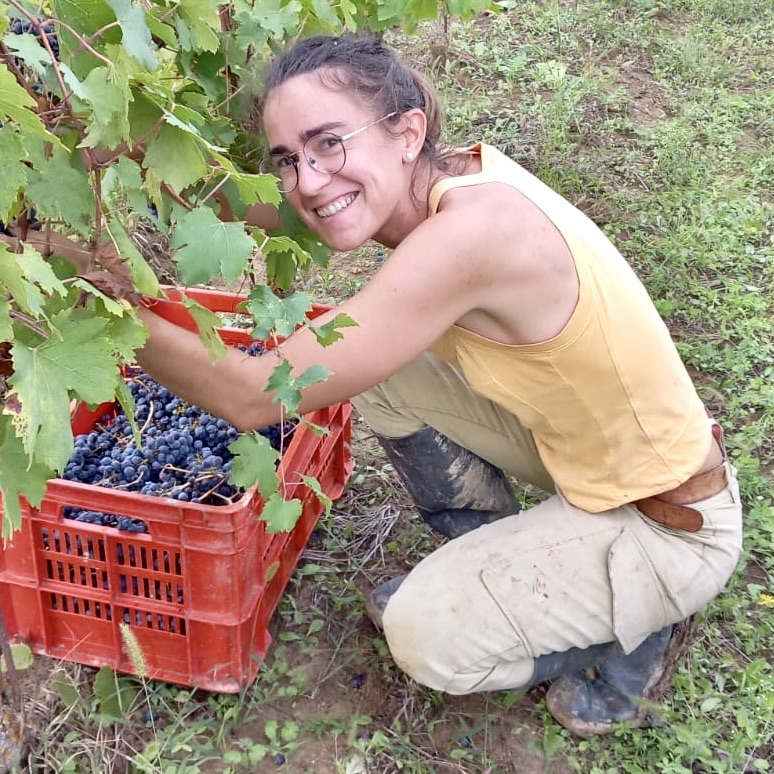
Los Angeles, October 16th-18th
San Diego, October 19th-20th
San Francisco, October 23rd-24th
Central Coast, October 25th-27th

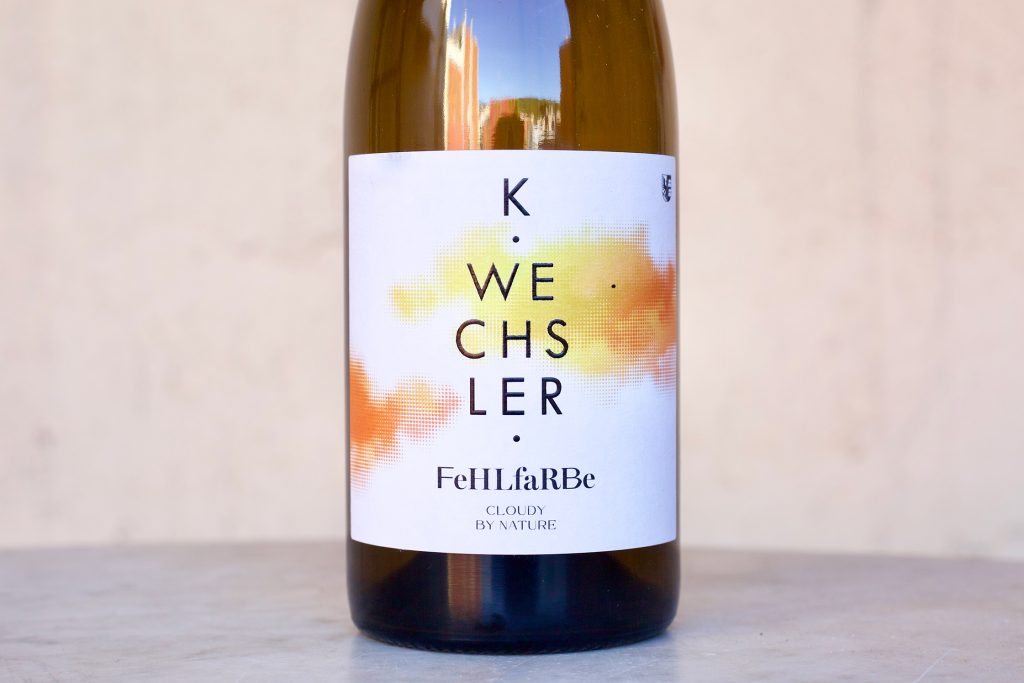
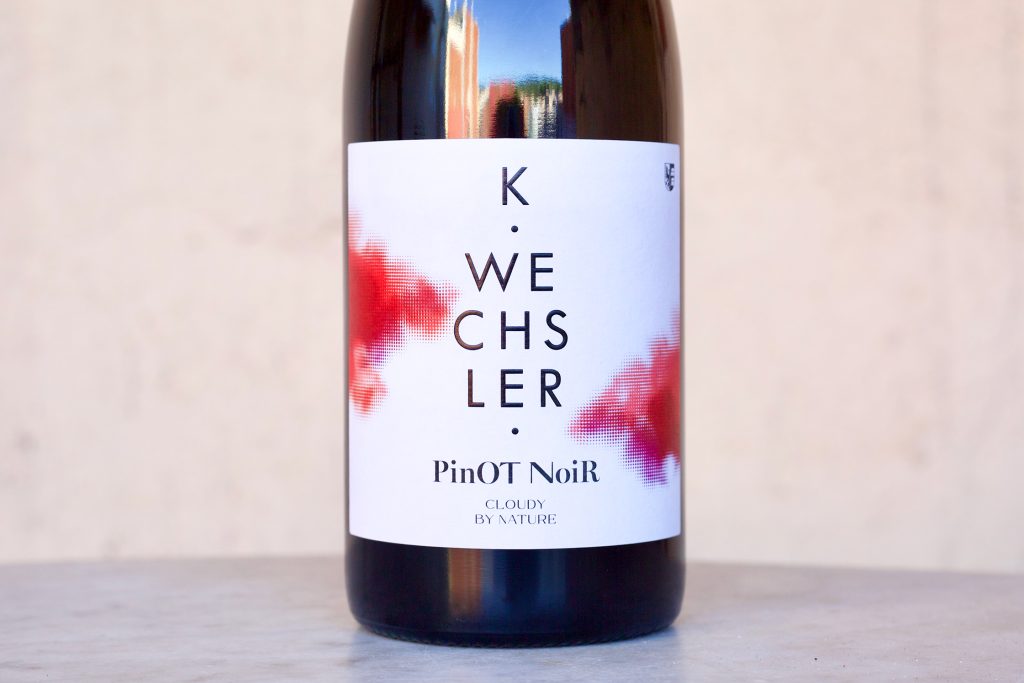

Katharina Wechsler is on a roll. She got married in August, had some rave reviews (not important to us, but they don’t hurt), and just released what is likely her top Riesling vintage to date. Last month we released Wechsler’s classic dry wine starter kit with the 2021 Scheurebe Trocken, 2021 Riesling Trocken, and the 2021 Riesling Trocken “Kalk,” formerly known as Westhofen Trocken. This month we have two of the 2021 Cloudy by Nature wines: the orange 2021 Scheurebe “Fehlfarbe” and 2021 Pinot Noir Rosé “Sexy MF.” Both are superb and without any added sulfites. The bottles of 2021 Sexy MF have some carbonic gas and need a gentle jostle once open, but once it shakes loose, it is as sexy as the name suggests. Perfectly clean lees come through with sweet red and pink flowers and first of the season sunny wild strawberries. Its slightly more overcast side (albeit still quite illuminating) is a slight tilt toward cranberry and sweet orange peel. It’s far too easy to drink, so bring out two bottles for each occasion of more than two people. As upfront and fun as it is, tasted next to the Scheurebe Fehlfarbe, Sexy MF comes across as discreet. Named after a famous 1980s German punk rock band, Fehlfarbe’s tone and energy is a match: a spicy, zesty, leesy, yeasty explosion! The aromas are completely untamed and eye-widening fun. By comparison, the palate is more Pink Floyd: dreamy, zingy and tightly effervescent with coarse enough tannins to keep you locked in the trance, stoned and coming back for more of the jasmine, white flowers, earl grey and lavender tea aromas.
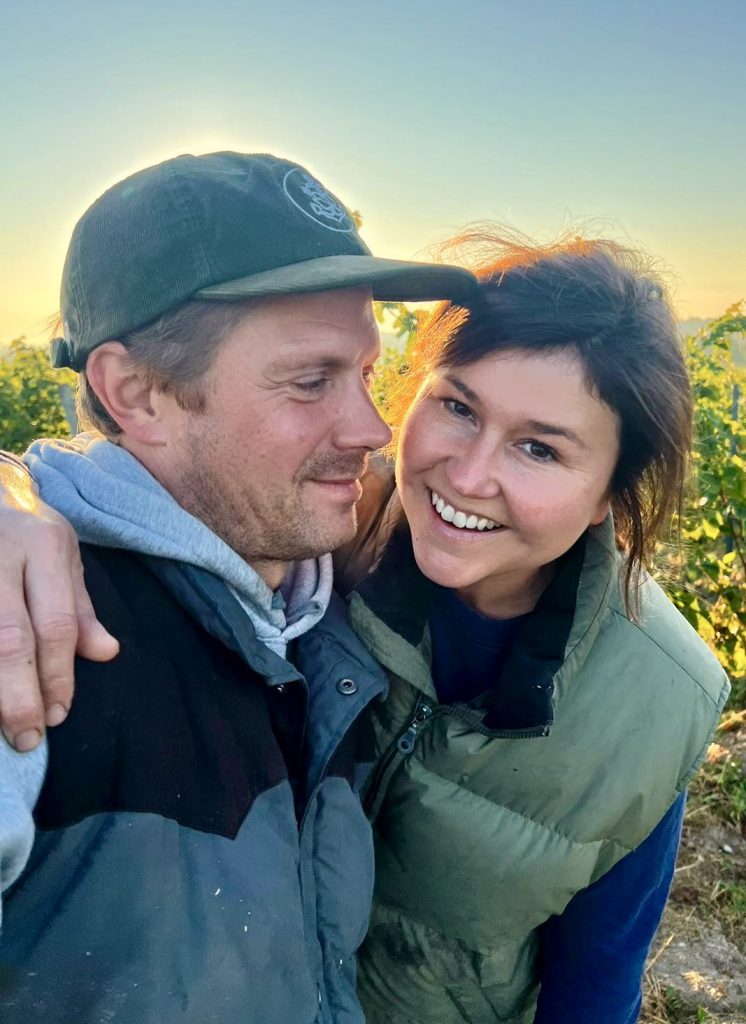
During Katharina and Manuel’s wedding, I focused on the 2021 Riesling Crus: Benn, Kirchspiel, and Morstein. The three wines were dynamic and such a pleasure on an unexpectedly cool, wet and windy August weekend. Benn presented its most compelling argument since I first encountered Wechsler’s wines and is a pretty successful bid to clear its name as the third wheel in Katharina’s big three. The most surprising uptick is its more pronounced mineral impressions and core depth than in the past. It’s a perfect vintage for Kirchspiel and its predominance of loess topsoil above limestone bedrock, which tends to push it to be the most extroverted of the bunch. In a vintage of fruit that’s understated compared to that of hotter years, it’s more wound up and regal than in the past. This colder season seems to have given center stage to the limestone bedrock to do more chalking early on. As I was drowning in the operatic emotion of Morstein and the weight of their wedding, I pondered what it means to get married to someone, what it’s like to watch people possibly taking on the biggest commitment of their life. There were a lot of other special wedding wines from local superstars, and the one I wanted the most was Katharina’s Morstein. It was a monumental wine for a spectacular day.

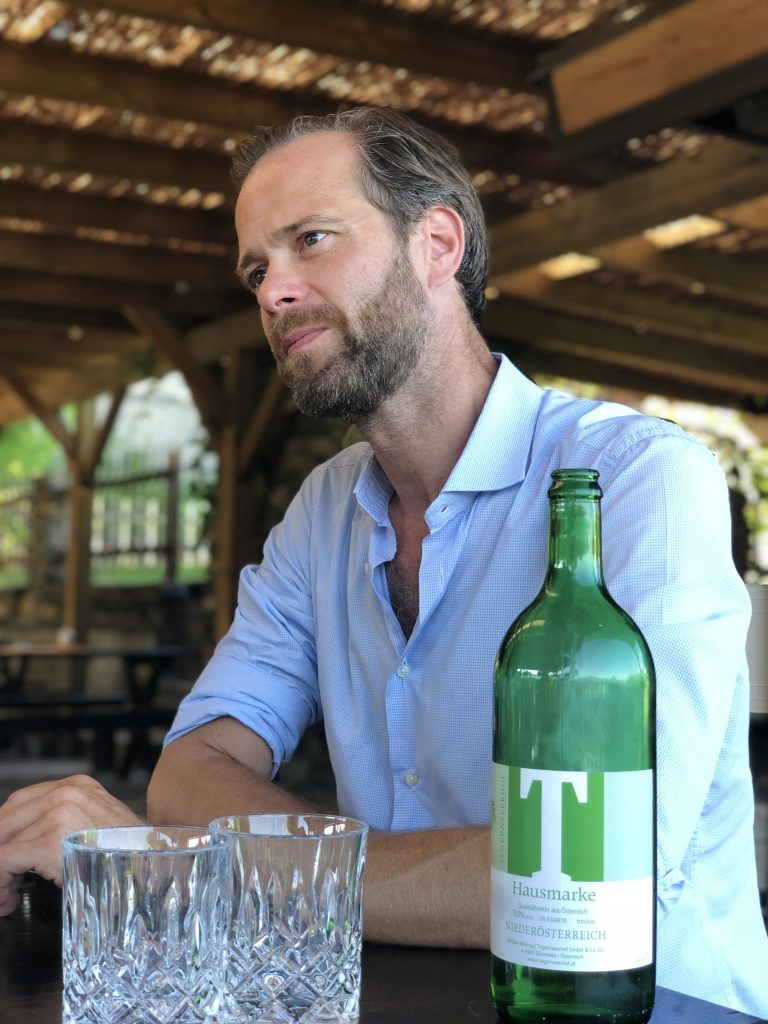
One of the most important recent changes for Martin is his embrace and certification of organic farming, which alone sets him apart from most of the Vinea Wachau’s ruling class, who can’t seem to break their addiction to “conventional” farming. He’s a fifth-generation winegrower (though Tegernseerhof dates back more than a thousand years), and his philosophical compass always pointed toward natural farming.
Like most producers, Tegernseerhof’s Riesling vineyards are also mostly located on the steep upper terraces composed of gneiss, and the Grüner Veltliners are on lower loess and alluvial terraces. However, Martin has three Grüner Veltliner crus on gneiss bedrock with little to no covering of loess: Ried Höhereck and Ried Schütt, bottled as a Smaragd, and the Federspiel, Ried Superin. His range is also distinguished by his exclusive use of steel vats and vigorous sorting to remove any density-adding botrytis and slightly shriveled and sunburnt clusters.

2022 was a hot year, which makes the usually zippy Federspiels more attractive to a wider audience. The Dürnstein Grüner Veltliner Federspiel is a mix of many different parcels low on the terraced slopes and on loess plateaus next to the Danube. The bedrock and topsoil are primarily loess and river alluvium. This is the grü grü of Tegernseerhof’s range and offers an expansive and soft overall dry, chalky profile with fresh fruits, pastoral summer flowers, and Veltliner spice. Martin’s Ried Superin Grüner Veltliner Federspiel comes from a spot down by the river on gneiss bedrock cleared of any loess deposits yet replaced by river alluvium. The roots here are in contact with the bedrock. The bedrock coupled with rocky topsoil makes for a contrast to the sunbathed and deep loess soil parcels of the Durnstein bottling. It’s more rocky and minerally in profile; spicy, deeply salty, and with a tighter and straighter frame.
Tegernseerhof’s Dürnstein Riesling Federspiel comes from many steeply terraced vineyards with southerly exposures in the eastern end of the Wachau, most notably from the crus, Loibenberg and Kellerberg. The bedrock is mostly gneiss and the topsoil is gneiss with some loess. The 2022 version is another gateway drug for non-Riesling drinkers to discover this variety. It combines open-knit yet ornate aromas with tight framing and tension.

I’m sure I will sing the praises of the 2021s from my first tastes in the spring of ‘22 til the day I can’t taste a thing. I remain floored by the quality of the wines and cannot get enough. Aside from Tegernseerhof and Veyder-Malberg, I’m also lapping up various Federspiel wines over here in Europe from the great Wachau producers we don’t import. (Teaser: three main ones begin with the letters A, K, and P.) At around 12% alcohol, Federspiel is what I want to drink from the Wachau these days. Their freshness and fruit profiles match my calibration. However, the two growers we work with in the Wachau that make Smaragd-style wines—Veyder-Malberg doesn’t use the Vinea Wachau classifications—are closer in overall profile to Smaragd wines of the past (minus the botrytis), and closer to the Federspiels of today.
Martin makes glorious Smaragd wines for those who go for a lean and focused body and texture. Fluidity is one of his hallmarks and one of Riesling’s most important attractions. Other great white grapes, like Chardonnay and Chenin Blanc, can get away with noisy yet compelling wines steeped in deep textures, but a great dry Riesling needs to express fluidity. This is one of the elements that I believe have separated Austrian dry Rieslings from German for many decades, though the Germans are certainly catching up. (Indeed, there are certain German individuals who broke through long ago, but the Austrians were cranking out fabulous dry Rieslings for many decades before many Germans began to rediscover them.) Tegernseerhof’s newer wines find that greater fluidity and this is especially important at this time when wines can go full monster under the sun after a few extra days left on the vine. I may again take the liberty to partially credit this to an even softer, more natural approach in the vineyards. (If presented with two peaches of the same type and same ripeness level, one organic and one conventional, do you think you could tell the difference? Beyond the sugar, acid and textural balance, I think chances are high that you would. It’s the same with grapes.)
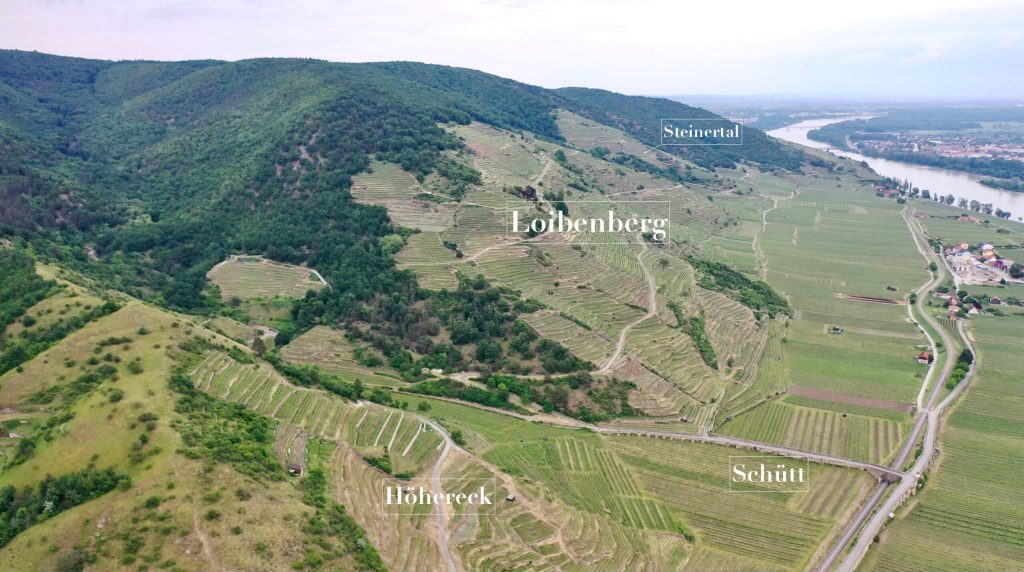

Ried Loibenberg is the main hill of the north side of the east end of the Wachau and probably the most photographed series of vineyards. From a terroir perspective, its diversity is due to its size, both vertically and length, and the variation of bedrock and topsoil. But one consistent characteristic is that it is one of the warmest hill slopes in the Wachau. It has few ravines that pass through it which creates a non-stop hot mountain face. Usually, when there is a substantial ravine cutting through a hill, the hills take on a different name and have wines with different expressions. Rieslings sit in the upper section of the hill on gneiss bedrock while mid-slope and toward the foot of the hill are the Grüner Veltliners, though this is not always the case. Loibenberg is almost always the first picked each season for the Smaragd wines and Martin picks even earlier than most. He has many parcels scattered about the hill (as most growers do) with some Grüner Veltliner at the extreme top and Riesling closer to the bottom, offering him a wide window in which to pick.
Just to the west of Loibenberg are the Grüner Veltliner sites of Martin’s Ried Schütt and Ried Höhereck. Both sit partially inside of a ravine (known as the Mental Gorge, or Mentalgraben) where water erosion separated them from Loibenberg. The combe floods with cold air from the Waldviertel forest behind and above the vineyards, contributing tension to balance out its deep power. With an unusual appearance for a great cru site, Schütt is a relatively flat vineyard with only slight terracing below the steeper Höhereck. It’s composed primarily of hard orthogneiss bedrock and decomposed gneiss topsoil with a mixture of different-sized, unsorted gneiss rocks and sand deposited by the former water flow. Replanted in 1951, Tegernseerhof’s Höhereck is the Grüner Veltliner parentage of many Tegernseerhof vines in the area. A rare Grüner Veltliner planted almost exclusively on the acidic metamorphic rock, gneiss, rather than the sandy, nutrient-rich and water-retentive loess, typical for this variety with a beneficial southeast exposure inside and just popping out of the ravine with great access to forest freshness and mountain winds and an early summer and autumn sunset, Martin says that the most important element of Höhereck is its genetic heritage. This half-hectare (1.25 acre) vineyard has been a growing field for centuries for ancient Grüner Veltliner biotypes, thus contributing to the complexity of this wine and Martin’s entire range of Veltliners, with all new plantations made with its genetic material. Höhereck produces dynamic wines that still manage to show great restraint, though this is perhaps due to its great abundance of layers that unfold once the bottle is open.
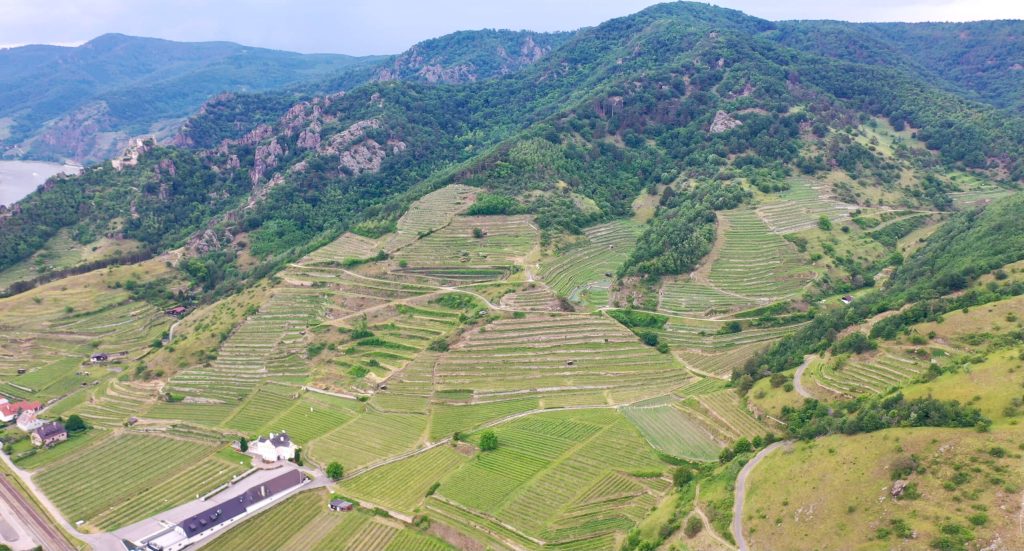
Martin’s Ried Steinertal Riesling Smaragd comes from one of the greatest Riesling sites in all of Austria and its aromas beam from the glass with enticing and full-of-energy, high-toned mineral impressions. These elements are likely due to its growth in purely gneiss rock, spare topsoil and Martin’s preference for earlier picking and rigorous sorting to remove any concentrated botrytis grapes. The vineyard’s heat-trapping amphitheater shape and the steep ravines on both sides also create a teeter-totter of hot days and the cold nocturnal mountain air that breezes in and cools down the vineyard.
If one were to ask a knowledgeable wine professional about the greatest vineyards in Austria, the Wachau’s Kellerberg would likely be mentioned in their first breath. Tegernseerhof’s Ried Kellerberg Riesling Smaragd is the fullest Riesling in their range, surely vying for the top spot with Steinertal. The hill faces mostly southeast, giving it good sun exposure in the morning but also an earlier sunset than the neighboring Riesling vineyards with more southerly and sometimes western exposures, like Steinertal and parts of Loibenberg. Kellerberg is also exposed to a large open ravine to the east that brings in a rush of cool air during the night. The aspect and exposure to this ravine, along with mostly unplanted hills just to the west, allows the fruit to mature to ripeness without imparting excessive fruitiness while highlighting its pedigreed gneiss bedrock and spare topsoil. It has a deep range of topsoil from volcanic, loess and bedrock-derived gneiss, and Tegernseerhof has six parcels inside its boundary that cover these soil types. Loess brings richness and lift, gneiss the tension and focus. Even more important than the nuances is the way this wine makes you feel: the energy, the profound reservation, and at the same time its generosity. Kellerberg is formidable and does indeed comfortably sit among the world’s greatest vineyards.

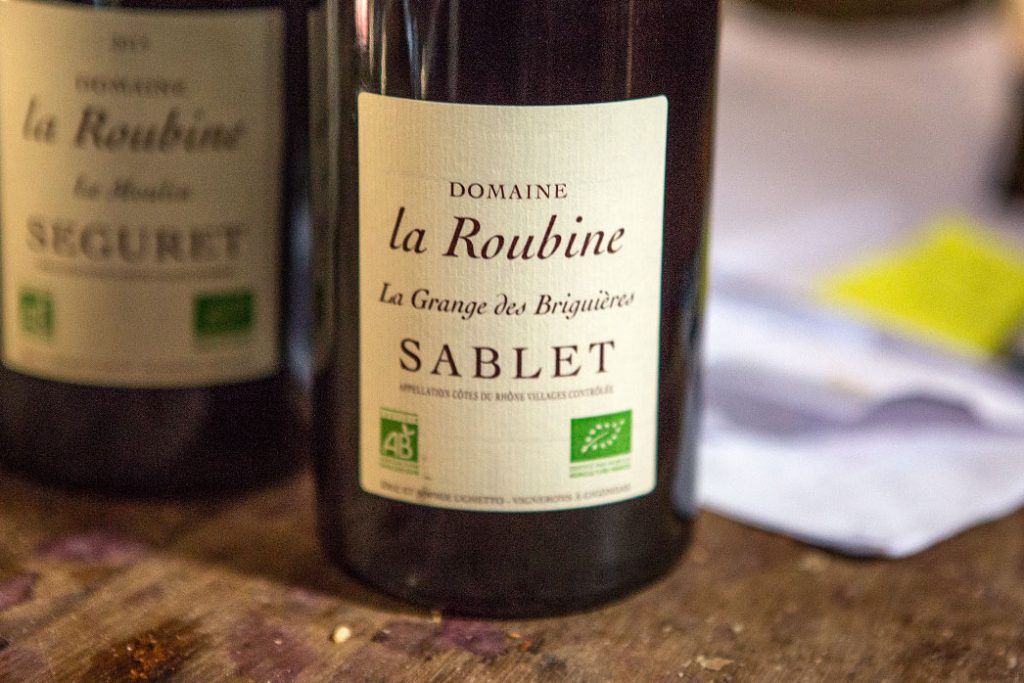
We’ve waited quite a few years for another opportunity to walk down memory lane with Southern Rhône wines like Eric and Sophie Ughetto’s 2021s bottled under Domaine la Roubine. We love full-throttle, deeply flavorful versions of their organic wines (certified since 2000) in warmer years, which they manage masterfully every year, but we love even more their wines from cooler years, like 2021, which seem to be a once-in-a-decade occurrence—perhaps 2013 was the most recent one with those seasonal features.
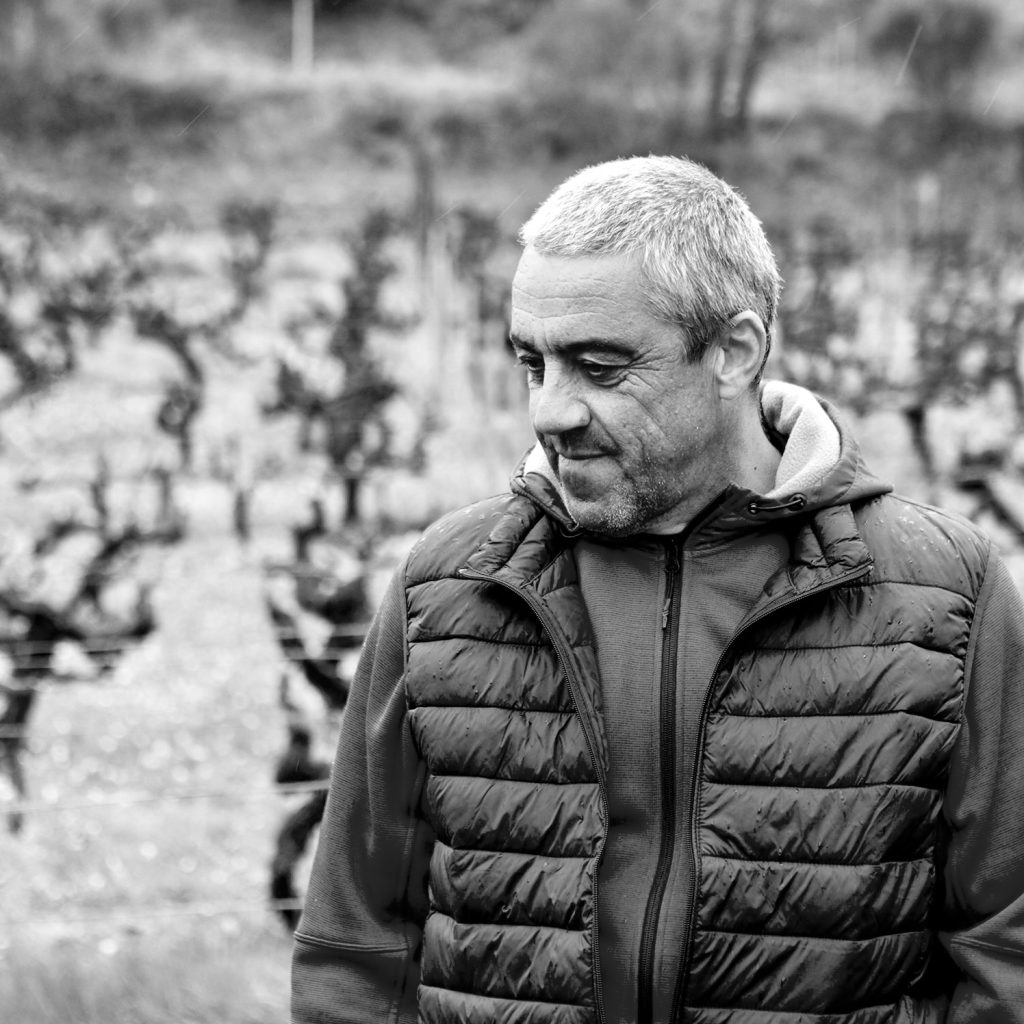
Similar to the limited Rioja section on many wine lists where there is almost exclusively preserved for the fabulous historic R. López de Heredia wines, those from the Southern Rhône without association to the name Reynaud hold many fewer positions compared to what they once did. With the greater demand for lower alcohol wines (for obvious reasons) in the face of the south’s naturally higher alcohols, its warm climate, and the longer season needed for phenolic ripeness to bring, Grenache, one of the world’s most noble grape varieties and the south’s leading red wine (and rosé, and white!) protagonist from tannic austerity to the potential for sublime texture and aroma is a short window before the wines quickly pack on the muscle and more mature fruit. But even above 16% alcohol, Grenache can miraculously achieve balance (though it may take away the drinker’s): consider those from the Châteauneuf-du-Pape luminaries, Rayas and Vieille Julienne. (Somehow many wine pros insist on low-alcohol wines but quickly blur their lines when presented with an opportunity for the holy grail and singularly perfumed yet blockbuster-level alcohol wines of the Rayas-associated domaines.)

Whole cluster and long fermentations are one of Roubine’s signature characteristics, and this keeps their wines fresher and more savory without getting overrun by the south’s big fruitiness. Whole cluster ferments take a month in the case of their two Côtes-du-Rhône Villages, Sablet and Seguret, and about 45 days for Vacqueras and Gigondas. This leaves even their most unassuming and price-friendly red starter range raised in concrete and fiberglass tanks to deliver unexpectedly ornate details for commonly forceful wines from these parts. Both Vacqueras and Gigondas still represent supreme value and often age effortlessly. I recently pulled out some cellared bottles of Domaine des Pallieres, vintages 2001 and 2004. They were fabulous and didn’t yet seem to be on top of their aromatic potential—a grossly underappreciated and nearly forgotten element of aged Grenache.
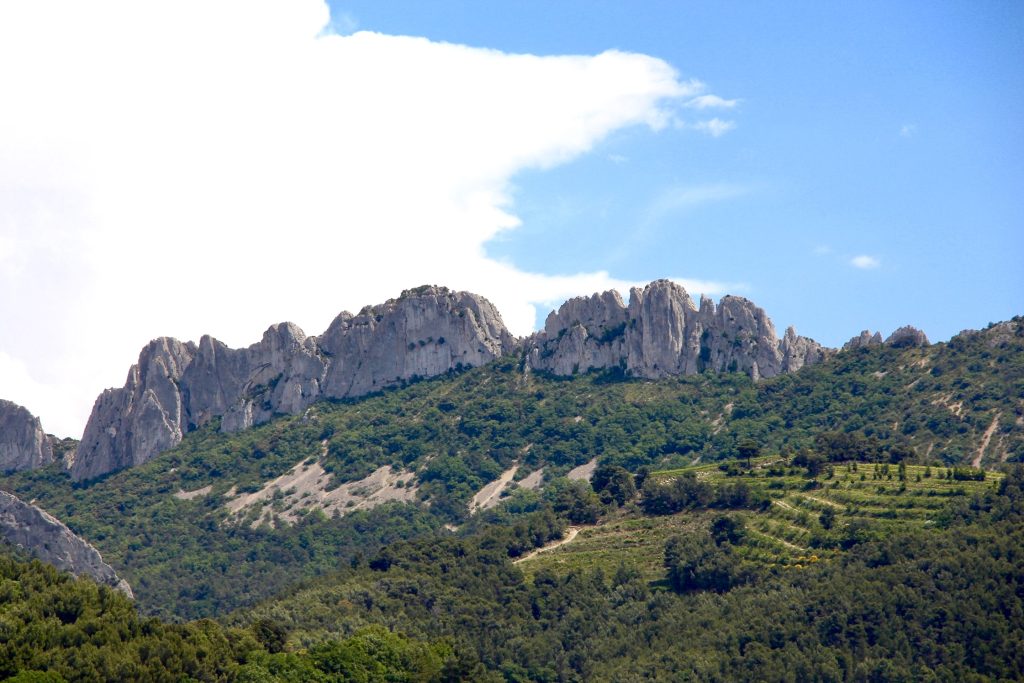

All of La Roubine’s vineyards are on the north-facing end of the Dentelles de Montmirail. This adds the benefit of less directly south-facing positions. The results are less desiccation of fruit and perhaps “cleaner” and more precise, taut fruit characteristics.
The Sablet comes from four hectares planted in the early 1990s on northwest-facing limestone terraces of sand, sandstone and quartz. The 2021 blend of 70% Grenache, 25% Syrah and 5% Cinsault delivers inviting earthy aromas lifted with mild lavender, black pepper, cedar smoke and herb-dusted black raspberry. Its polished, fine-grained tannins point to an evolved wine of a much higher caliber. (Disappointingly, we didn’t receive a single case of their beguiling Seguret this year.)
Roubine’s Vacqueras comes from five hectares planted in the 1960s on limestone and calcareous clay facing west on the west side of the Dentelles de Montmirail. The 2021 blend of 70% Grenache, 15% Mourvedre, 15% Syrah offers clean, spicy florals on the nose that follow through the silky mouthfeel. Candied red fruits and delicately smoked meat flavors inform this extremely elegant version.
At the top of their food chain, and a sort of super-second appellation (behind Châteauneuf-du-Pape) is Roubine’s Gigondas. They have five hectares of 50-year-old vines on the north side of the Dentelles de Montmirail, with one flat parcel at 150-160 meters on iron-rich red clay and cobbles, and the other is a series of north-facing terraces at 260-300 meters on quartzite, limestone and alluvium. The 2021 blend is 70% Grenache, 15% Mourvedre, and 15% Syrah and renders a deep wine rich in aromas of perfectly ripe blue and red fruits with remarkable earth notes that push through the dense mid-palate flavors of cherry liqueur, black pepper, garrigue and subtle smoke. It’s seamless and already fully integrated, even as early in its life as it is.

What makes Dave Fletcher such a talent is the juxtaposition between his technical confidence and strong opinions with an outward insecurity about what people think of his wines. (This makes him a lot of fun to tease, and I never do this directly if I don’t like the person or the wine.) I don’t think it’s only Dave’s strengths that have brought him to where he is today, it’s also his openness to not only share the technical details of his crafting and vineyard terroirs but to allow us into his thought processes where he not only shares the triumphs of each season but the challenges and how they’ve irreversibly marked the wines. He openly and sometimes painfully admits what he sees as his mistakes in each wine, even when the hair on your arms and neck and sides of your face are goosebumped from the emotion stirred by the Nebbiolo in your glass. There have been many successful wines (I can’t say I’ve had an unsuccessful one) since he started his winery; Dave has progressed quickly and his 2020 Barbarescos are undeniably contenders for the very best he’s done.
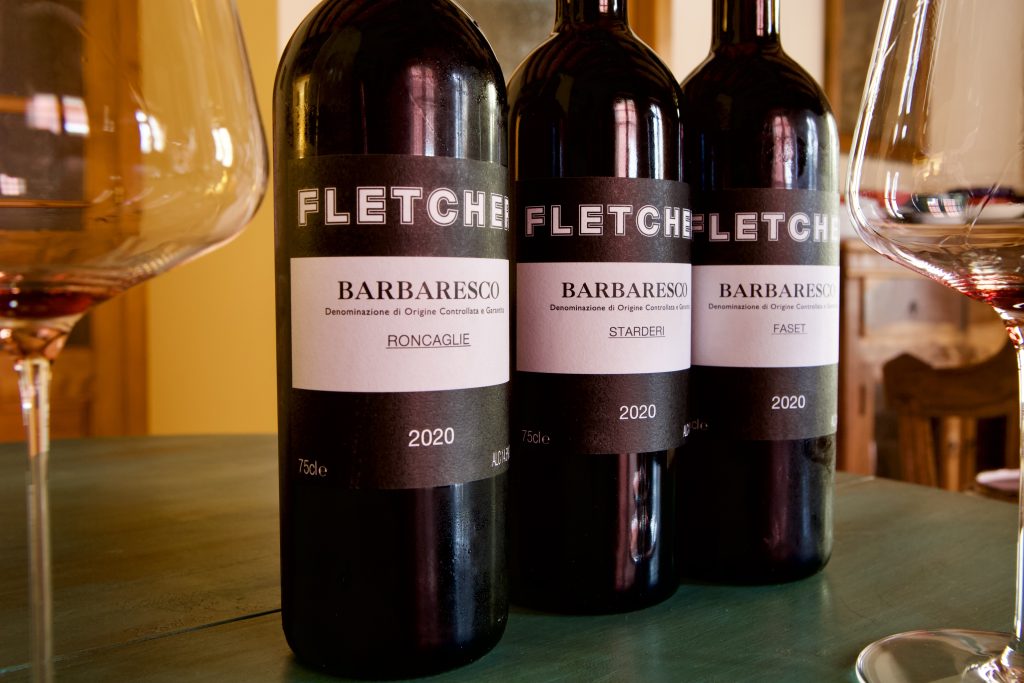
Does a wine’s aging potential make it a greater wine than those that may have less potential to age well longer but that have a longer optimal drinking window? Perhaps it does from the point of view of producers and critics because their legacy is important to them, but is it important to us? I think some of them might claim that the 2020s’ more modest tannins could be a hindrance toward aging, but I don’t agree.
California’s legendary Syrah winemaker, Bob Lindquist, from Qupé, told me while at my last restaurant post as a sommelier at Wine Cask in Santa Barbara in the early 2000s, that balance is what’s most important for a wine to age well. We were tasting some of his Bien Nacido Hillside Estate Syrahs after long cellar aging and they were wonderful. I can still taste those wines from that day and see Bob’s earnest eyes inside his glasses, and what he said always stuck with me. Sometimes I think the great Nebbiolo producers put too much value on Nebbiolo’s tannin level; the grape’s talent isn’t always best expressed in the vin de garde form. It’s extremely versatile, from Langhe Nebbiolo to bubbles, as well as its ability to achieve greatness in quite different terroirs, from the calcareous sands and mountainous, Mediterranean climate of the Langhe, but also the acidic igneous and volcanic rocks in the mountain climates of Alto Piemonte and Lombardia.
I can’t speak for everyone else’s 2020 Barbarescos, but I am a big believer in Dave’s entire range. 2020 Barbaresco and Barolo are sandwiched between some pretty serious years, but for me, it may be the dark horse challenger for the 2019s and 2021s with some producers—not only in the medium tier producers but the uppers too. However, time will tell. Fletcher’s 2020 Barbarescos are readier than the already upfront 2019s, but they don’t seem to lack anything, except stern tannin to fruit balance in their youth.
“I prefer this kind of vintage [2020] because they’re a little rounder and softer to begin with, but Nebbiolo still has plenty of tannin in the background.” -Dave Fletcher

Dave is a university-educated Australian enologist living in Barbaresco since 2009. He also has the area’s coolest cantina (maybe even literally): a remodel of the historic Barbaresco train station. He began working at the famous Ceretto Barolo and Barbaresco cantina as an intern, eventually becoming the head maker of their reds. Now he makes his own wines from more than a dozen vineyards around Barbaresco, Alba and inside the Roero. All vineyards farmed by Dave are either certified organic or under conversion (some with biodynamic practices as well), and leased vineyards worked by their owners are encouraged toward organic farming. In addition to his Barbaresco range, he’s experimenting with local varieties, like Barbera with partial cluster ferments and Arneis orange wine, and others that grow well in his hood, like Chardonnay.

“There wasn’t a lot of rain in the winter and there was almost no snowpack, which led to slow growth. Then in May, it rained a ton and the vegetation took off. Then we went into a dry spell through the summer which took us from saturation to dryness which caused rapid development of the fruit—a hallmark of the vintage. The fruit is super expressive and dense but not as tannic as the 2019s where there was a longer season for slower ripening compared to 2020. I prefer this kind of vintage because they’re a little rounder and softer to begin with but Nebbiolo still has plenty of tannin in the background.”

Everything is hand-harvested, destemmed, and naturally fermented for 14-60 days (two to three weeks for the 2019s and 2020s; three to four weeks for the 2021s) with a single gentle daily extraction by hand. The first sulfites are added after malolactic and all the Nebbiolos are aged in 10-15-year-old small oak barrels (two years for Barbaresco, one year for Nebbiolo) prior to bottling without fining or filtration.

There’s a lot of talk about the high quality of the 2021 vintage in the Langhe. Many growers were talking about it as though it’s one of the best they’ve seen, but they seem to say that a lot these days. Dave’s on the fence, but he doesn’t question the season’s high overall quality. We’ll get into that next year as Dave’s 2021 Barbarescos are about to be bottled right after the 2023 harvest. In the meantime, Dave released his 2021 Langhe Nebbiolo (formerly bottled as Nebbiolo d’Alba) and it’s a beautiful precursor to what will come with the 2021 Barbarescos. It’s sourced from Scaparoni, across the Tanaro River west of Alba, Montà, further north toward Roero DOCG, and Barbaresco, close to Fletcher’s winery. The vineyards are principally calcareous marls, sand and clay on a multitude of southerly expositions and altitudes. It’s also fermented and aged the same as all the Barbarescos but about half the time in wood. The 2021 is yet another example of Dave’s fine tuning, and always punches well above its class, especially because it parallels Barbarescos’ DOCG cellar regulations.
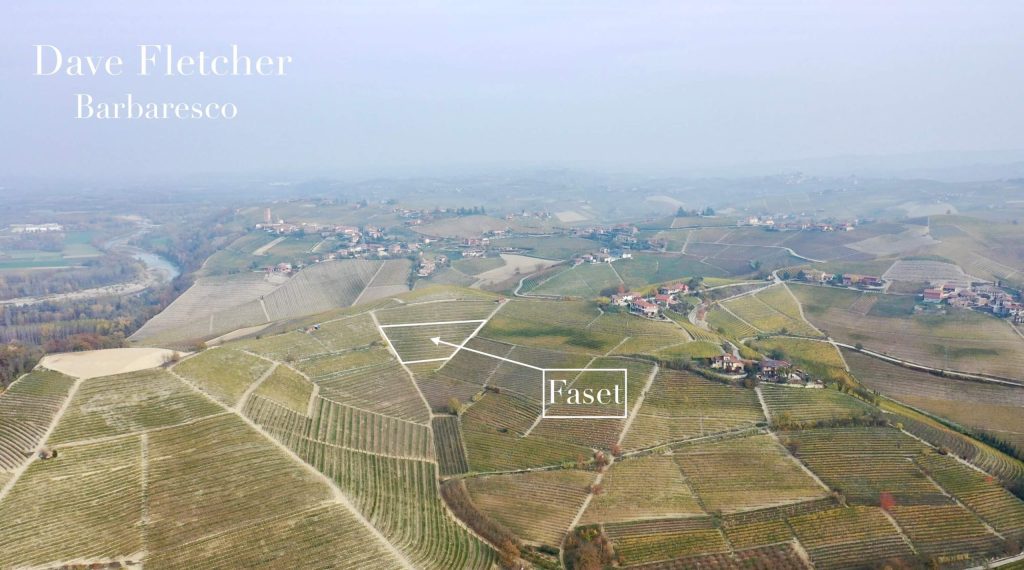

The alcohol balance in Fletcher’s 2020s seems optimal, even with an average of 14.5%. Those of us who want to experience/drink more all want less alcohol (personally, I wish they tasted the same without any alcohol), but in this case, it brings a tiny dash of sweetness that compliments Nebbiolo and lifts the retro nasal spicy, earthy, woodsy perfume. I suggest serving the 2020s cooler to keep their voluptuous assets tight and in place, especially the curvy Starderi.
Named after Dave’s familial Scottish clan, Fletcher, Shoot Straight translates the unique name given to the Barbaresco “Recta Pete.” The 2020 is a blend of 50% Roncaglie, 30% Starderi and 20% Ronchi, the latter a less-known vineyard adjacent and south of Montestefano facing south-southeast on a steep limestone sand and calcareous marl hillside. (The other crus, Roncaglie and Starderi, will be covered inside the profiles of each respective wine.) This Barbaresco is meant to be an early charmer, but with all of the crus so charming out of the gates (even if the Roncaglie is more stoic compared to the others) it represents a great value and better availability in the range, even if the quantities are miniscule.
We will start with Faset, the puncher in the group with great tableside manners and charm. Tasted in late September with Max Stefanelli, a recent addition to our team, along with my wife, Faset opened with a flurry of sappy red fruit and chocolate. In the mouth, it’s upfront, bigger, and rounder compared to the other Fletcher crus, with maybe a little more freshness on the palate—perhaps a credit to the vineyard’s greater clay content. It’s muscular at first and works to impress while the second pour tightens a touch with more earthy notes. An hour later the forest begins to thicken and the nose is denser and the wine calmer and less extroverted. Faset seems more universally appealing for drinkers who prefer a little more richness and weight at the expense of pointed and lifted aromatics. It was my wife’s favorite of the bunch on both days.
Faset comes from vines planted in the mid-1980s on a south-facing steeply terraced amphitheater at 200-250 meters on calcareous sand and limestone marls with a high clay content.
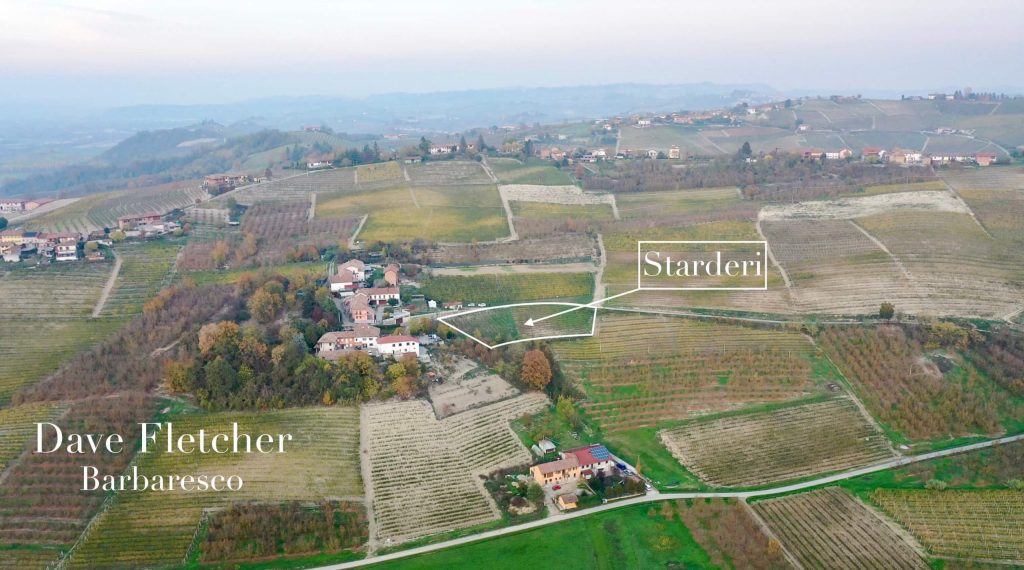
Fall flavors of sweet and dried fig, roasted chestnut, cedar box, anise, sweet red and dark licorice, pumpkin, persimmon, unfrosted carrot cake, and a strong finish in the back palate of Starderi provide a notable contrast from Faset’s straightforward fruit and earth punch. In the context of the three crus, it was the most charming from the first sip to the last sip on day two. The nose is intoxicating and lifted volatile compounds ride the edge as happens with so many wines from great producers. It’s immediate and seems to ready itself knowing the cork is about to be pulled. Warmth and joy emit as it takes in deeper breaths. The aromatic notes don’t change too much with time, except that they snug up and lift even more. The tannins nibble at the palate but never settle this uncontrollably extroverted wine down. This was Max’s favorite wine from start to finish.
Dave’s parcel of Starderi is planted in one of the sunniest plots in Barbaresco and is very close to the Tanaro River. His 0.10 hectares were planted in 1985 on a south-southwest-facing, medium slope of calcareous marl bedrock (~30% sand, 55% clay & 15% sandstone) and topsoil at an altitude of 200-210 meters.
If Starderi is the last born in its buoyant personality, Roncaglie is the first. Roncaglie is the most regal and articulate of the 2020 trio and initially expresses itself sparingly with short powerful bursts. Tighter upon opening compared to the Starderi and Faset, it has a balance of woodsy notes that lead over its floral and fruit spectrum. Aromatically, it’s a forest floor littered with chanterelles and the invigorating smell of disintegrating fallen redwood after a rain and old wood furniture with good patina. The aromas lift with rose, allspice, and patchouli. The fineness of the aromas misleads the palate as the first taste went off like a backdraft, sharply and endlessly expanding in dimension with power and precision. Once it settles after a few full gasps of air, the guard goes down and Roncaglie offers deep, soft and pleasantly revitalizing floral aromas. Rongcalie is very serious, and while it’s not as stunning as Starderi, it may be more beautiful. Even if it’s hard to pick a favorite, the tense beginning and constant evolution upward over hours made it the most compelling of the three, at least for this taster.
Roncaglie comes from vines planted between 1970-2010 on a south-southwest, steeply terraced amphitheater of calcareous sand and limestone marls at 240-280 meters.

